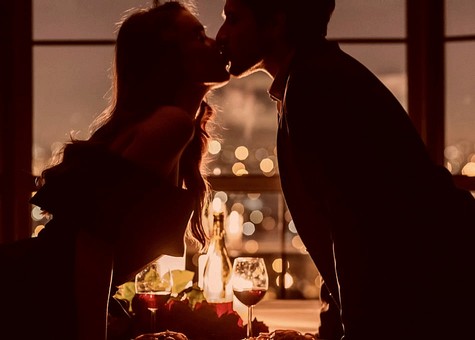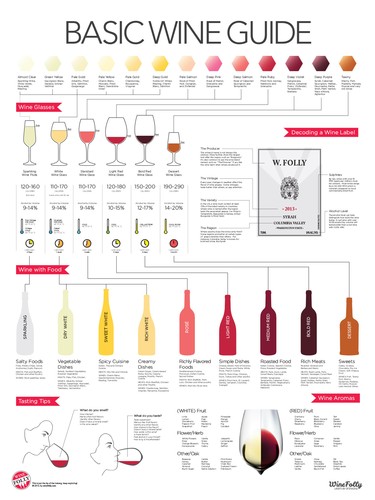Letters from Lodi
An insightful and objective look at viticulture and winemaking from the Lodi
Appellation and the growers and vintners behind these crafts. Told from the
perspective of multi-award winning wine journalist, Randy Caparoso.
Valentine's! 10 steps (for men) to successfully order wine in a romantic restaurant

So, gentlemen...
Say, for once, you've had the presence of mind to make dinner reservations ahead of time for Valentine's night—the second busiest day of the year (after Mother's Day) for restaurants. If you haven't, you may have already blown it.
So what are you going to do if you know your date prefers wine, but you know absolutely nothing about it? Should you ask, "Why don't we just go for pints of Guinness?" Wrong! If your dining partner is truly important to you, it is definitely to your advantage to whisper those three magic words: "Let's order wine."
And this I can say after 30 years in the restaurant business: Women prefer wine! Latest statistics show that women consumer 59% of all wine in the United States (re Thach, Forbes, on 2022 demographics). It's actually been like this since World War II. It's a cultural thing. Wine is what women drink when they get together with other women. You many not like wine so much, but when you are on an important date it is important, simply put, to get with the program.
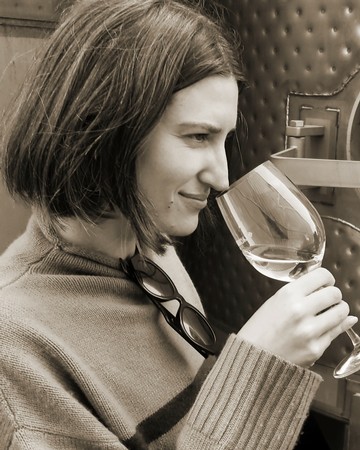
Lorenza Wine's Michele Ouellet Benson sampling one of her wines from the tank.
Which is not to say that males always do the wine ordering in restaurants. There are, in fact, many women who love to peruse wine lists and choose the wines themselves. If your date is one of them, simply go with the flow. Still, the fact remains that many men are expected to do the "honors" of choosing the wine in restaurants. I don't know why it's still something of a custom, as expected as opening doors, carving turkeys, and leading on the dance floor. It's great that many women are now okay with picking up the slack, but what happens to an inexperienced guy who is suddenly thrust in this uncomfortable position?
Needless to say, Valentine's dating roles do not entail only males and females. If your circumstances are different, simply adjust accordingly. In the end all couples are faced with the same dilemma: Wine makes a romantic dinner even more romantic, but someone needs to do the ordering.
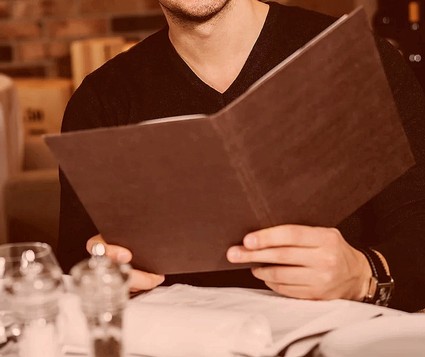
Here are ten easy steps to finding the right wine, and perhaps the key to someone's heart:
1. Bone up. Ordering wine in restaurants is not like rocket science, or even auto mechanics. There are numerous introduction-to-wine books at your disposal, even those with mostly pictures rather than straight, boring text (re Wine Folly, Wine 101). You can order a book or simply go online, but there is no excuse for being unprepared.
So presuming you've done your homework ahead to time, here is what you do once you've made it to the restaurant, and have just been seated...
2. Once you're sat, a waiter will arrive and ask if you would like to start with a cocktail or glass of wine. Rule #1: Remember that you are there to please your date, not a server. So without breaking the gaze between the eyes of your companion and yourself, the thing to do is to simply ask, "Would you care for a glass of champagne?" Since champagne (i.e., sparkling wine) is the most romantic possible choice, chances are she will agree right away (it is Valentine's, after all). Ask your waiter for either two glasses or a bottle of sparkling wine (go for glasses if you are not big drinkers). In the nicest restaurants, they will usually offer some kind of French Champagne (at least $20 a glass). In middle-range restaurants, it's usually a California sparkler ($10 to $15) or an Italian Prosecco (maybe about $9).
Either way, go ahead and ask your waiter about what they have in the way of either French Champagne, a California sparker or a Prosecco (practice the pronunciation of the latter ahead of time, pro-SEK-oh, with a slight roll of the r) by the glass. All of these wines taste great, and it's not the price that's important, it's how you ask for them (try to sound like you've done this a thousand times before).
Next step, you should be looking at your dinner menus. Perhaps you're worried about remembering what goes with what. Is it white wine with white meat, or red wine with fish? What if she orders pasta, just a salad, or fish, lobster, chicken, steak, or steak and lobster—are these dishes for white wine, red wine or rosé? The answer is, don't sweat it! Just remember the following guidelines...
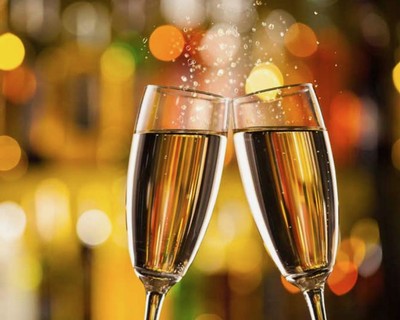
3. Plan to order a full bottle of wine. Why? Bottles are so much more impressive, or romantic, than wines by-the-glass. Do not worry about quantity. If you say something like, "Let's not worry about finishing it, the best wines always come in full bottles," how do you think she'll feel? Do words like dashing and debonair mean anything? But do not, under any circumstance, ask for a doggy bag for any leftover wine, since a cultivated man is well aware of the fact that in most states or counties it is against the law to leave a restaurant with an open bottle of wine. The important thing is to sip your wine slowly and consume only as much as you safely can—and plan to leave any unfinished wine at the table.
4. Do take a good look at the wine list, whether or not you know what you're actually looking at. The important thing is to look good doing it—this is romance, not a chemistry exam. You might consider practicing beforehand—furrowing your brows, raising one side or the other, or glancing up with a smile or whispering "ha!" as you turn the pages. When I was managing restaurants I always reminded my waiters that they were "onstage" every single night, as literal performers. The guests at the tables are just as much a part of the performance!
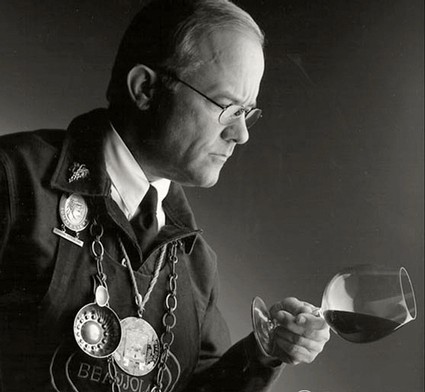
Eddie Osterland, America's first Master Sommelier.
You should also remember this: No matter where you are, do not order anything less than, say, $40 or $50. Why? Because if your date should happen to notice that you've gone cheap, you'll be in trouble again. For this day and age, I suggest planning on something in the $60 to $90 range, which is not excessive but will usually get you something that is pretty darn good (for a successful date, the wine you order has to taste great, too!). If $100 to $200 is within your means, go for it, but it isn't necessary. I happen to be a wine professional and a connoisseur, and $60 to $90 wines are, in fact, what I usually order in restaurants, too.
5. Now it is time to order the wine. If you've already forgotten what little you've learnt, don't panic. Just follow this full-proof method: Select one of the most food-flexible examples of a dry white wine, a smooth style of red wine, or a dry rosé (the latter, in French, correctly pronounced row-ZAY). In fact, it is perfectly okay to ask your server (or a sommelier—pronounced so-mel-YAY—if you're in a fancy place with a full-time wine professional/server) for a recommendation of, say, a good, dry rosé, emphasizing the need for this rosé to be dry (otherwise the server might assume you're a doofus and steer you towards a sweet, tutti-fruity pink wine, which might turn off the both of you and ruin the taste of your food).
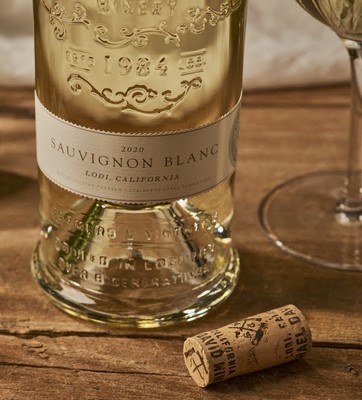
Lodi-grown Sauvignon Blanc.
Most women, of course, also prefer to be consulted. So even before querying your server or sommelier, go ahead and ask your companion, "Would you prefer a white, a red or a dry rosé?" If she says white, look for any white wine made from the Riesling (REES-ling), Albariño (al-bah-REE-no), or the popular Sauvignon Blanc (SOW-vee-nyawn blawnk) grape—three of the most food-versatile, dry style white wine varieties in the world today. Do not worry about brands or producers, generally any choice within your price range will be perfectly delicious, and will taste great with practically any dish. By the way, you might have heard that Chardonnay (SHAHR-doh-nay) is also a popular white wine variety. Don't order it—Chardonnay is so popular, it is not quite as hip these days. If she specifically requests a Chardonnay, of course, then that's what you look for. Once again, the important thing is looking physically good when leafing through a wine list, pronouncing the basic wines correctly, and being a good listener—women appreciate listeners above all else!
6. If she says she prefers a red wine, look for either a Pinot Noir (PEE-noh nwah) from California or Oregon, or a Zinfandel (ZIN-fan-del) from California. There are many other types of red wine to choose from, of course, but Pinot Noir and Zinfandel happen to be two of the most food-versatile red wine varieties in the world today because they tend to be smooth, zesty, not overly strong in the bitter or astringent taste of tannin (the sensory component you taste when biting into the seed of a grape), and pleasingly fragrant. These intrinsic sensory attributes are what make them taste great with red meats and pastas, and are also why they can be surprisingly good with almost any seafood dish. Yes, it's like playing safe—throwing the ball out of bounds instead of risking a sack or interception—but hey, why take a chance of blowing it?
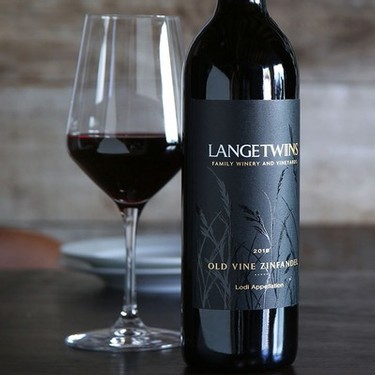
Lodi-grown Zinfandel.
7. Say you are hopeless, and cannot navigate a wine list no matter what. Then it doesn't hurt to ask for help! I believe most women are impressed by men who aren't afraid of asking for directions anyway. Shows off your sensitive, intelligent, caring side—you can make your confusion a definite win-win. Therefore, absolutely, do not be afraid of discreetly waving your server or sommelier over to the table, looking him or her in the eye, and asking for specific recommendations of, say, a dry rosé or any of my recommended whites or reds. Almost all restaurant people are trained (or accustomed) to providing multiple choices in terms of price and style. They might, for example say this Pinot Noir is "lighter and earthy" as opposed to this other Pinot Noir which is "very perfumed with the scent of blueberries and spice." You might not understand a word of any of this, but it doesn't matter—just nod and pick one of the options you are given, and act like you really know what you're doing, as if you and your server or sommelier plotting a great conspiracy together. This MO can never be repeated enough times: It's never what you say or do, it's how you say or do it.
8. You need to prepare for two possible curves because, as in all things, not everything goes according to plan. First, maybe your date does not like "dry" wines after all, and specifically requests something a little fruity or sweet. No problemo, just ask your server or sommelier to recommend a slightly sweet rosé or white wine (Germany, incidentally, grows the finest sweet whites in the world, although they do make good ones in California), emphasizing the word "slightly"—you need to be specific because wines that are overly sweet do not taste great with most dishes (except for sweet desserts, which we'll talk about later).
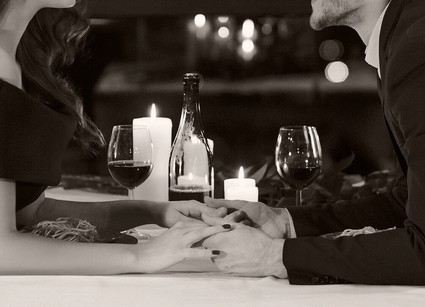
Secondly, many women who are big on red wine may prefer a fuller bodied (i.e., heavier tasting in the mouth) wine. Pinot Noir may be too "light" for your partner, and maybe she hasn't had good experiences with Zinfandel in the past. If that's the case, the go-to red wine for this particular taste preference is any made from Cabernet Sauvignon (KA-ber-nay SOW-vee-nyawn), the universal choice of most lovers of serious red wines. So practice this request a few times—"Could you please recommend a good Cabernet Sauvignon?"—and maybe throw in something that sounds like you are genuinely in possession of inside-knowledge, such as "... a good Cabernet Sauvignon from Napa Valley, maybe Sonoma County, perhaps Paso Robles if you have one."
A couple of caveats: Because of their heavier, dryer qualities, Cabernet Sauvignons are less ideal with seafood than they are for meatier dishes (beef, lamb, pork, etc.) as entrées. It's not the law of the land, but it's sensible. Discuss. Secondly, Napa Valley Cabernet Sauvignons can easily exceed $100 in a restaurant, although not all of them—hopefully your server will be considerate enough to give you reasonably priced options, not just the ones that break the bank.
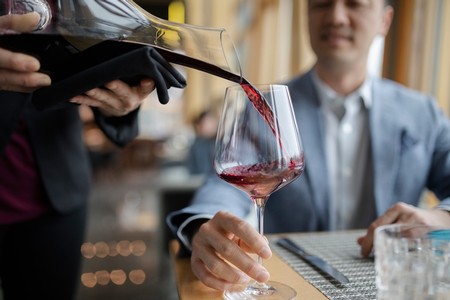
9. The waiter or sommelier will then wish to perform the serving ritual, which is when the bottle is presented and opened, and you are asked to taste and approve it. There are few ordeals (like circumcision) worse than this, and so the least made of the entire rigmarole the better. So when he or she brings over the bottle, look your server straight in the eye and ask, "Is this the wine we ordered?" This will force the server to bring the bottle closer to your eyes, point out the label and even read it to you. If it looks and sounds like the bottle you ordered, simply say yes, or "Wonderful, thanks!"
Then comes the hard part: A small portion of the wine will be poured for you, and there's no place to hide—you'll have to smell and taste it with everyone watching, even if you have no idea of what you're doing. The only way to prepare for this moment of truth, of course, is to practice ahead of time. There are many how-to-taste-wine videos online, so it's not as if you're up the creek with no paddle. I like, for instance, this "Wine Basics" YouTube by Virgin Wines because it is detailed yet stays on-topic. When you view how-to videos, you should notice how wine glasses are always correctly held (by the stem, not the bowl), and how wines are swirled (try this at home!), smelled and discreetly sipped when tasted. When I do this in a restaurant, it takes all of 4 seconds—1 second to swirl, 1 second to bring the tip of the glass to the nose for a quick sniff, and just 2 seconds to take a sip and put the glass back on the table, smile, and say to the waiter, triumphantly (as if you've just sunk a half-court trey or passed for a 50-yard TD), "Great, thank you, please go ahead and pour!"
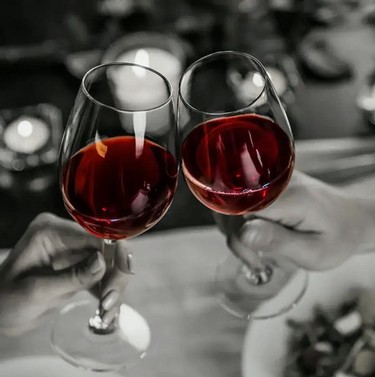
Another trick: If your date, in fact, has participated in the selection of the wine, or has even chosen the wine herself, then it is only right that she should be the one to taste it! So once your server presents the bottle, it is perfectly appropriate to say, "If you don't mind, please let the lady [or 'my partner'] taste the wine for us." If she is hesitant about that, it is also okay to say, "Could you please pour a little for the both of us to taste together?" Any of these scenarios is perfectly acceptable and demonstrates that you are in complete control, which is the main thing. As it is, a woman who has selected the wine (even if you gave the order to the waiter) should be the one to taste and approve it, and your deferring to her good judgement demonstrates the proper amount of respect.
Finally, still another possible scenario: It is also perfectly okay, once the waiter or sommelier opens a bottle, to make the request, "Could you please leave the bottle on the table and we'll taste it ourselves when we're ready?" Then once the server leaves, you can proceed on your own, without having to feel like you're under police interrogation. Once you've taste the bottle left on the table and ascertained its soundness, go ahead and pour a little for the two of you. The waiter will simply follow up and do most of the rest of the pouring for you. When pouring for yourself, just remember to go slow (don't be a double-doofus and spill it all over the table) and to pour glasses only about a quarter to a third full—it is gauche to fill glasses close to or more than half-way up a glass. And remember to hold your wine glass by the stem!
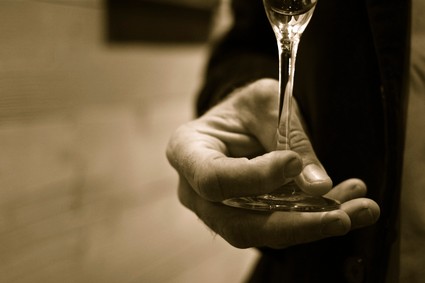
10. Then for the final touch: How many women do not love chocolate, or sweets in general? Not many. So if you really want to top off the night in style, do not automatically order coffee with dessert. If you are in a better-than-average restaurant, it is a good idea to ask for a "dessert wine list," or to ask your server about their selections of sweet dessert wines to go with whatever dessert you might be ordering. Dessert wines are always served by-the-glass (usually in smaller portions than dry wines—therefore very do-able, providing you have not already indulged in too much alcohol).
A classic example of a sweet dessert wine is a Tawny Port from Portugal (many restaurants offer domestic selections of Port as well), which taste absolutely amazing with any kind of chocolate dessert. If she's never experienced this before, there's a good chance she'll kiss you right then and there. If you order a creamy or fruit-based dessert, ask for a recommendation of a "late harvest" white wine (a wine literally made from grapes picked late in a harvest season, when grapes are shriveled and extra-sweet). All sweet dessert wines, by the way, also taste fantastic with blue cheeses—finishing with a platter of various cheeses (if the restaurant offers one) can also be a perfect ending. Sweet wines enjoyed at the end of a meal are, in fact, the height of sophistication and pleasure. Among wine connoisseurs, affectations as passionate as love itself.
Isn't that what Valentine's is all about? Be safe out there!
